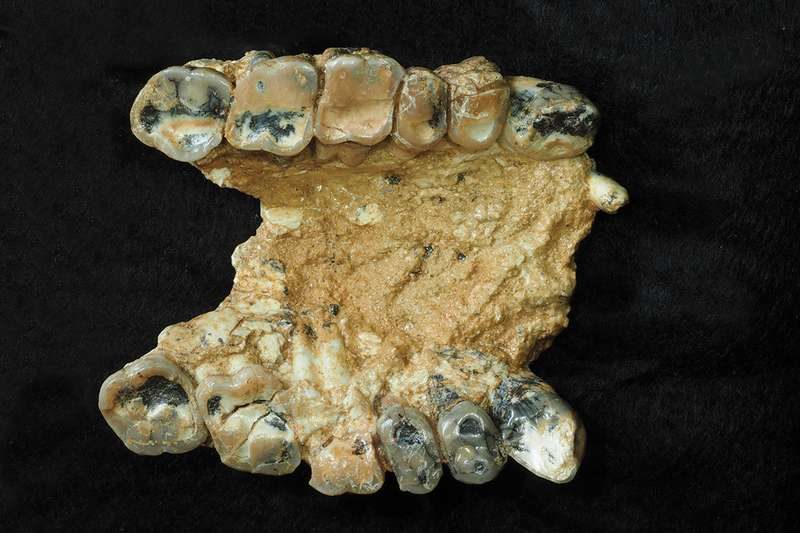
© David R. BegunThe hominin-like piece of upper jaw was found in Nikiti, Greece
The jaws of an ancient European ape might speak volumes about the origins of our ancestors. A new analysis of these fossils supports a controversial idea: that the apes which gave rise to humans evolved in south-east Europe instead of Africa.
Hominins are a group of primates that includes modern humans, extinct humans like Neanderthals and Denisovans, and our immediate ancestors, including australopiths like the famous Lucy.
In his 1871 book
The Descent of Man, Charles Darwin suggested that the hominin group originated in Africa - an idea most anthropologists believe today. But he also wrote that the group may have arisen in Europe because, at that time, fossils of large apes had already been uncovered there. "Darwin was open-minded," says David Begun at the University of Toronto, Canada.
Almost 150 years later, Begun thinks
two fossilised chunks from an upper and lower jaw may support a European origin of hominins. They were found in the 1990s in 8 to 9-million-year-old deposits at Nikiti in northern Greece. Initially assigned to the extinct ape Ouranopithecus, Begun thinks the small yet pointy canines suggest the specimen is a male animal
from what may be a previously unknown species.Small canines are a hallmark of hominin species. Begun doesn't think the Nikiti ape was a hominin, but he thinks it might represent the ancestral group the hominins evolved from, which would suggest the first hominins lived in south-east Europe. Begun outlined the idea at a conference of the American Association of Physical Anthropologists in Cleveland, Ohio, in March.
Begun and his colleagues have previously examined fossils of a 7.2-million-year-old ape called Graecopithecus that also once lived in what is now Greece. This animal seemed to have small canines too, plus hominin-like "fused" roots to one of its premolars. In 2017, the team cautiously concluded that Graecopithecus might be a very early hominin.Under this scenario,
the 8 to 9-million-year-old Nikiti ape could represent a group of "proto-hominins" that gave rise to hominins in Europe, represented by Graecopithecus at 7.2 million years old. Hominins then migrated into Africa by about 7 million years ago.Begun says many will reject this because the idea of African hominin origins has been the leading scenario for decades, but he hopes they will at least consider a European alternative.
When the Nikiti ape and Graecopithecus were alive, south-east Europe was a savannah occupied by ancient forms of antelope, pig, rhino and giraffe. "It's widely agreed that this was the founding fauna of most of what we see in Africa today," he says.
"If the antelopes and giraffes could get into Africa 7 million years ago, why not the apes?"Yohannes Haile-Selassie at the Cleveland Museum of Natural History is unconvinced. The Nikiti ape and Graecopithecus may not be closely related to hominins at all because unrelated primates can evolve superficially similar features independently, he says.
The Nikiti ape may have hominin-like teeth because it evolved to chew its food in a similar way, says Kelsey Pugh at the City University of New York.
Cornell scientists create 'living' machines that eat grow and evolve
[Link]
Isn't this possible?